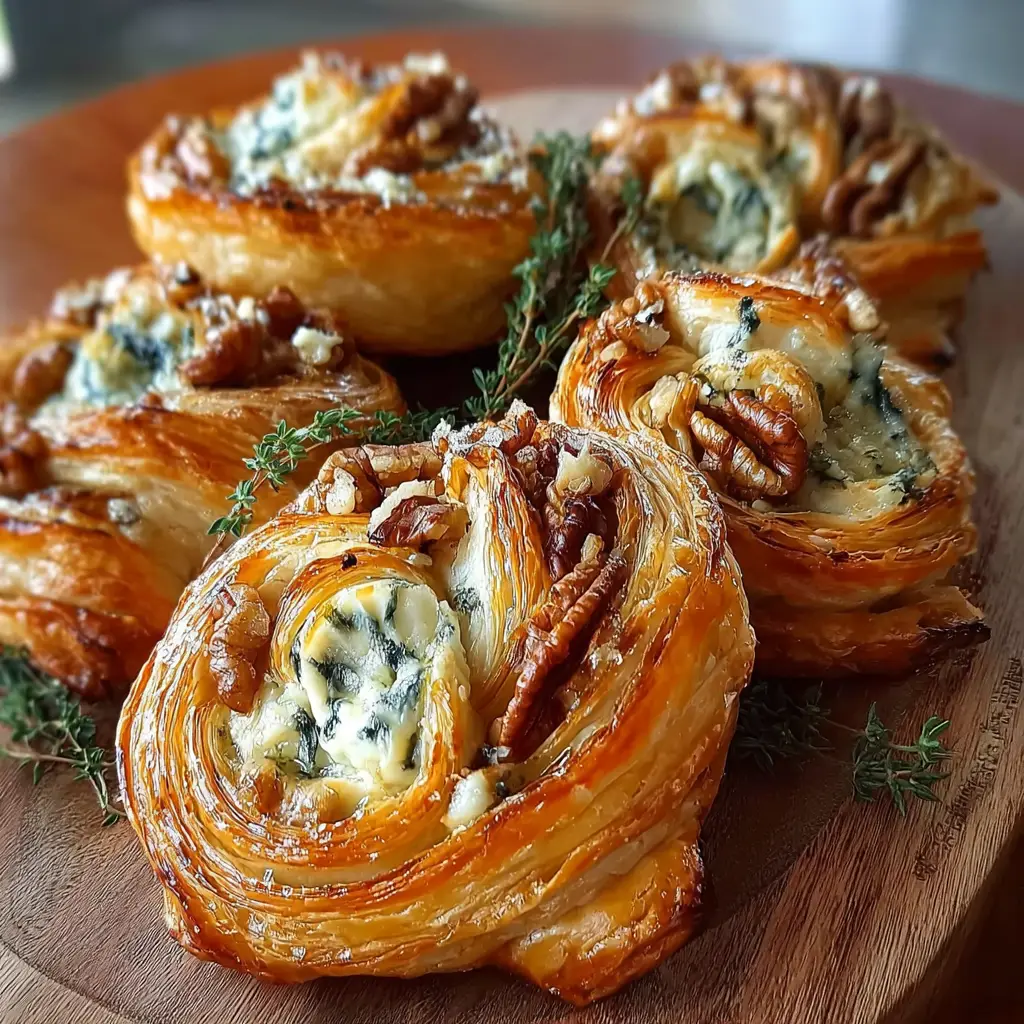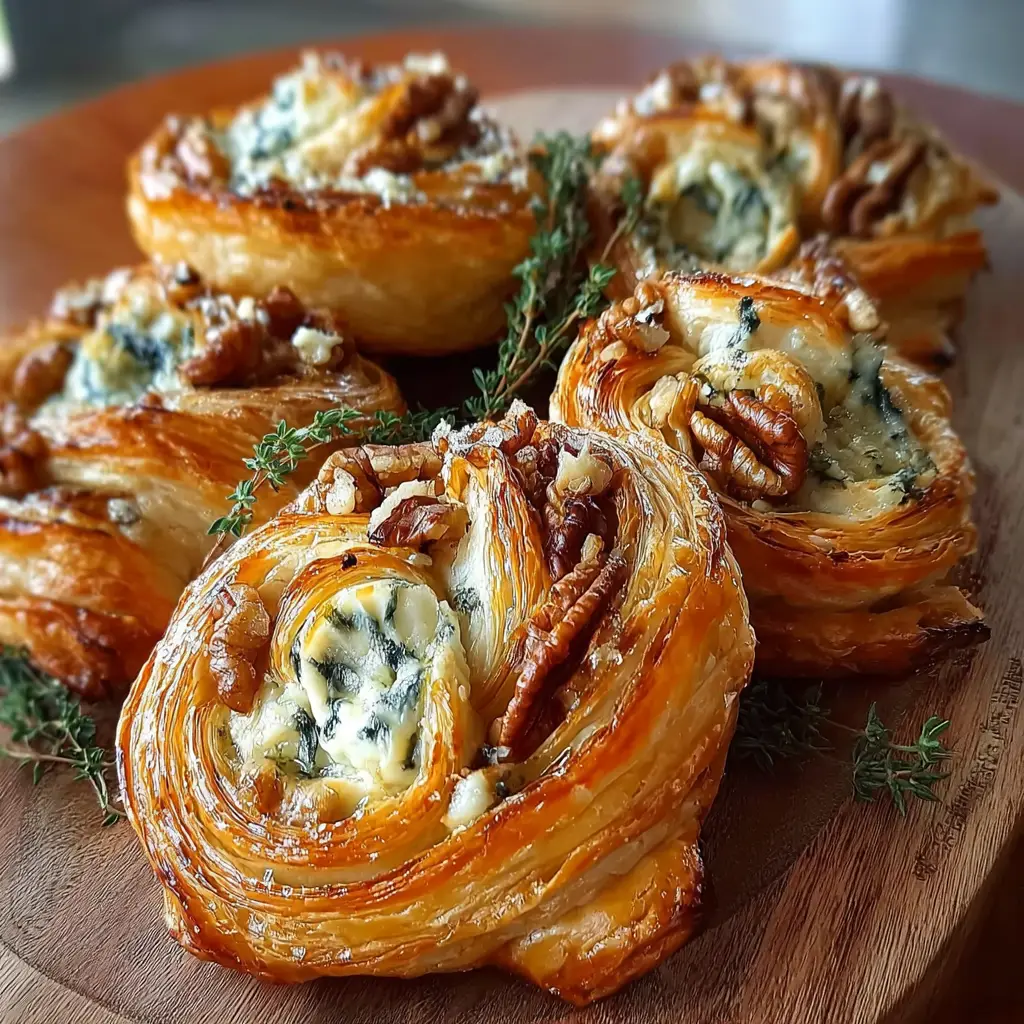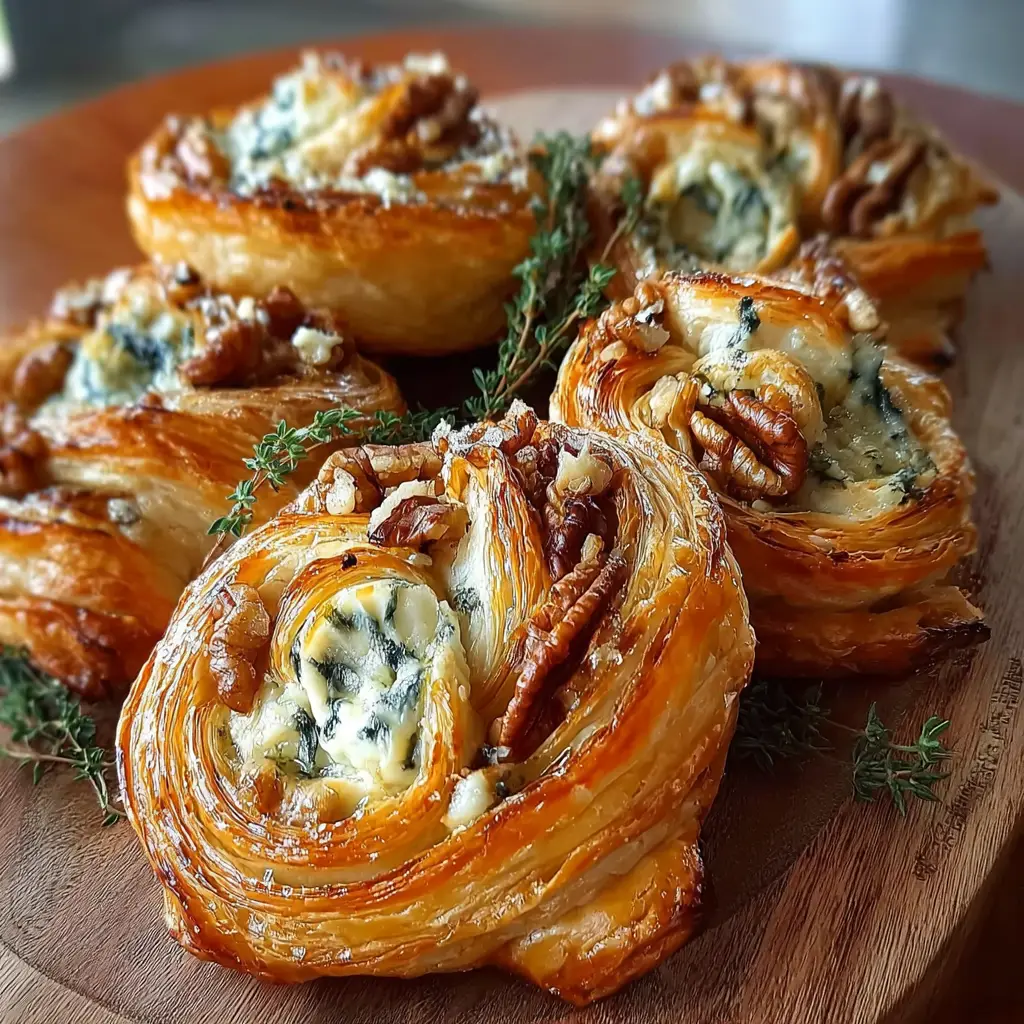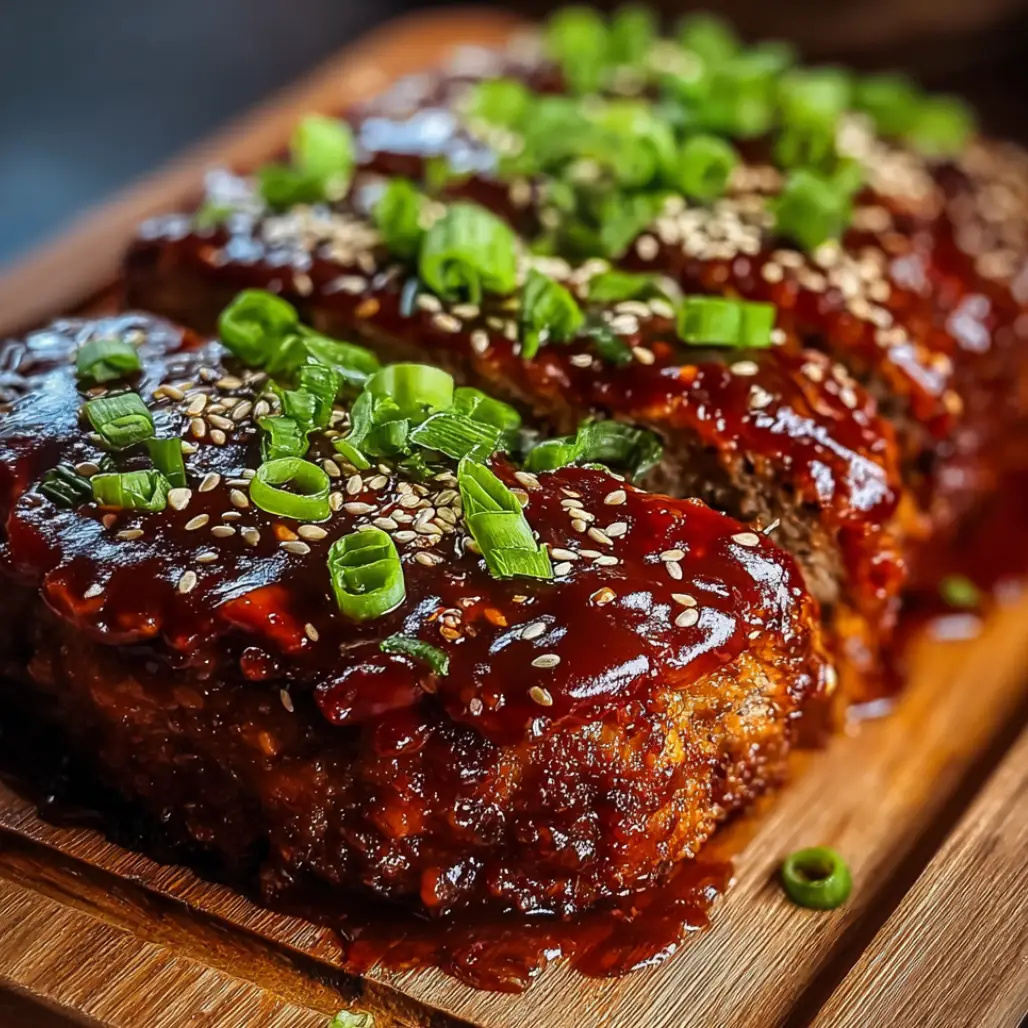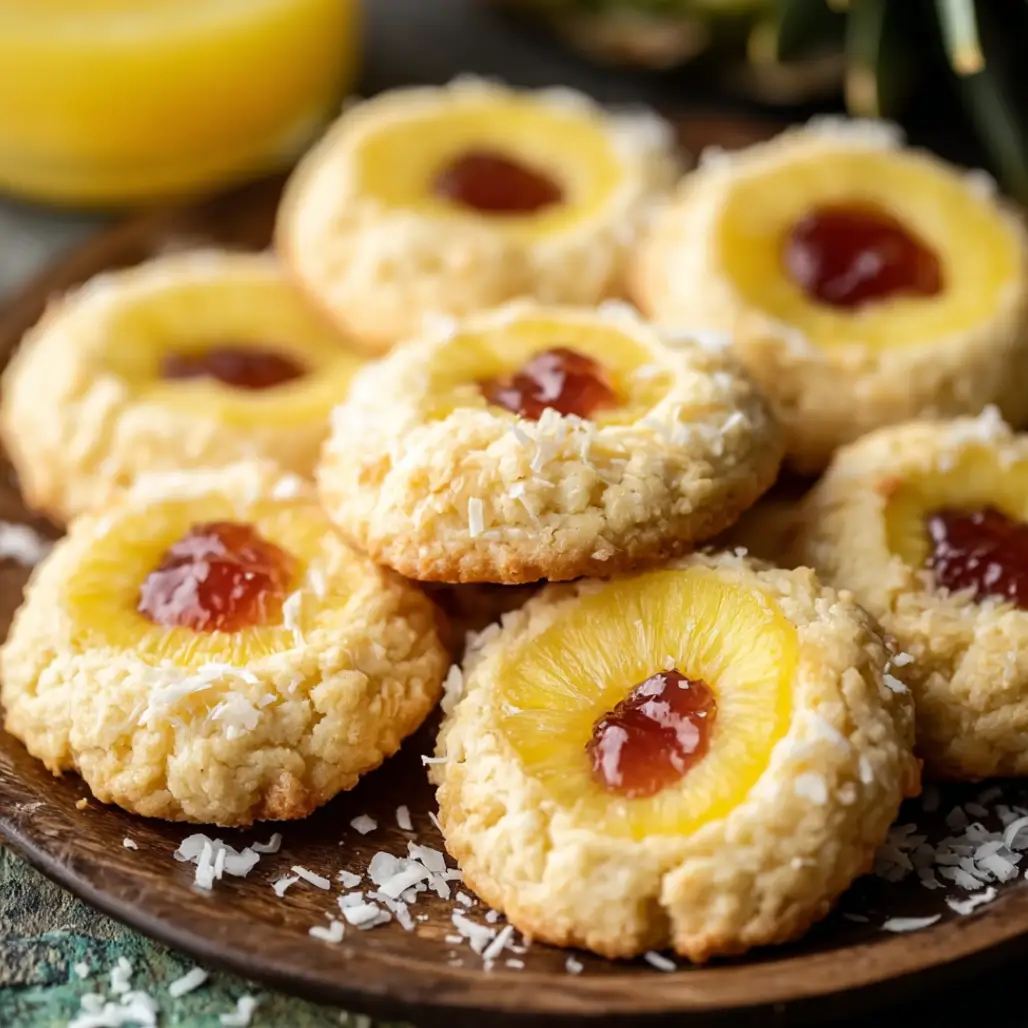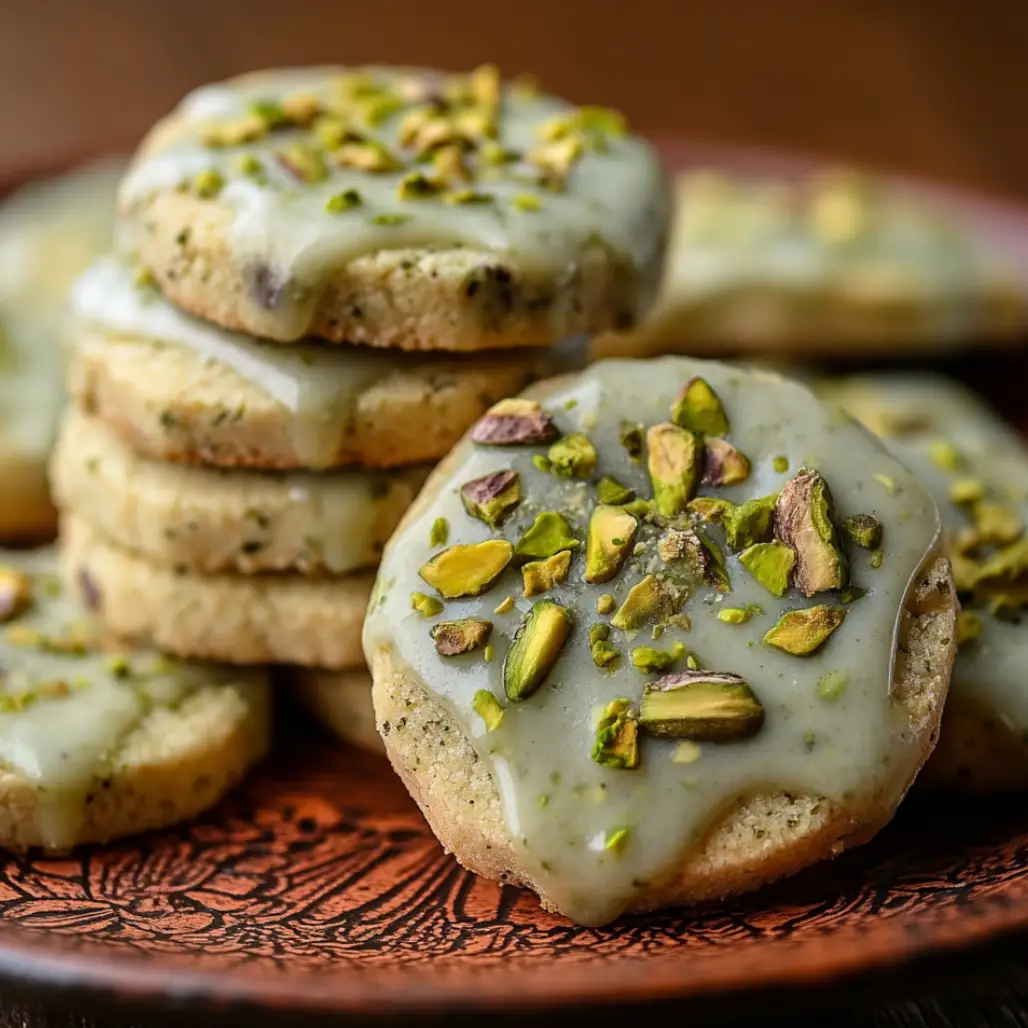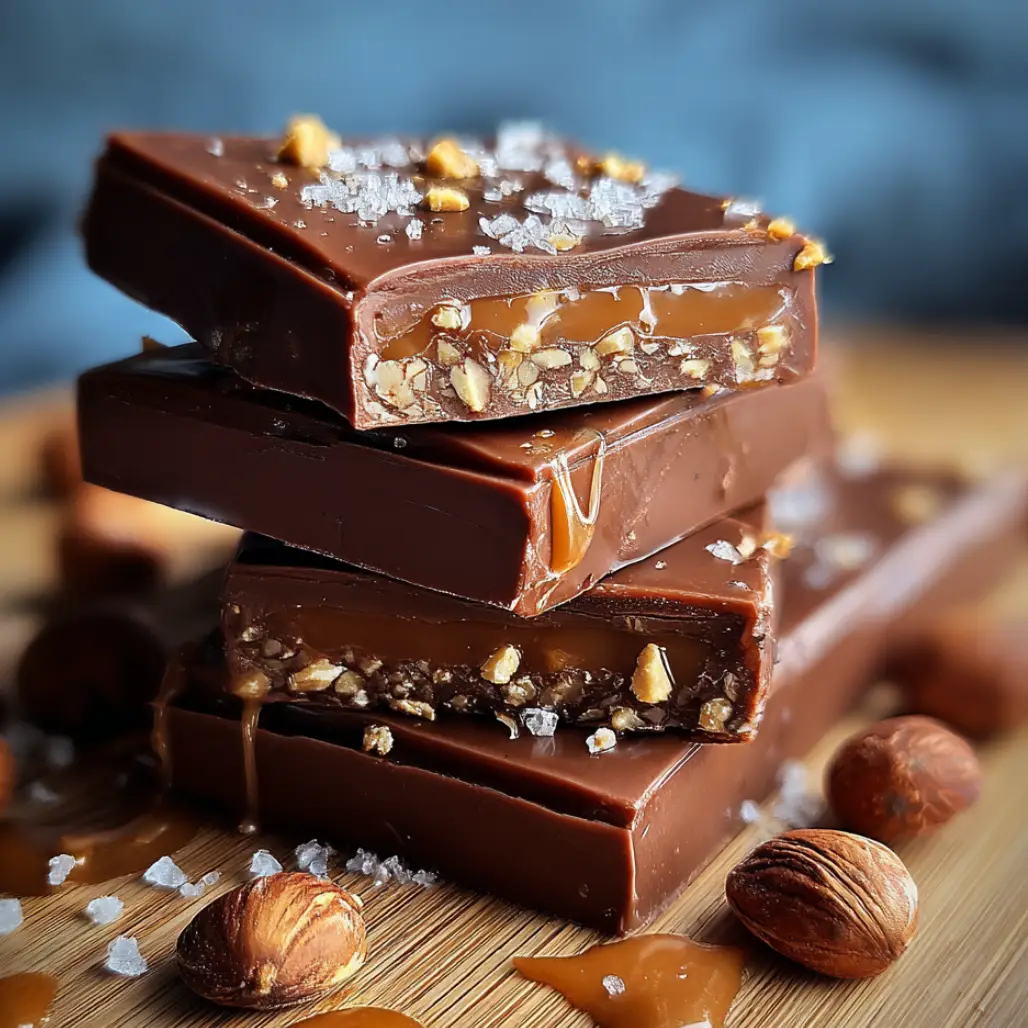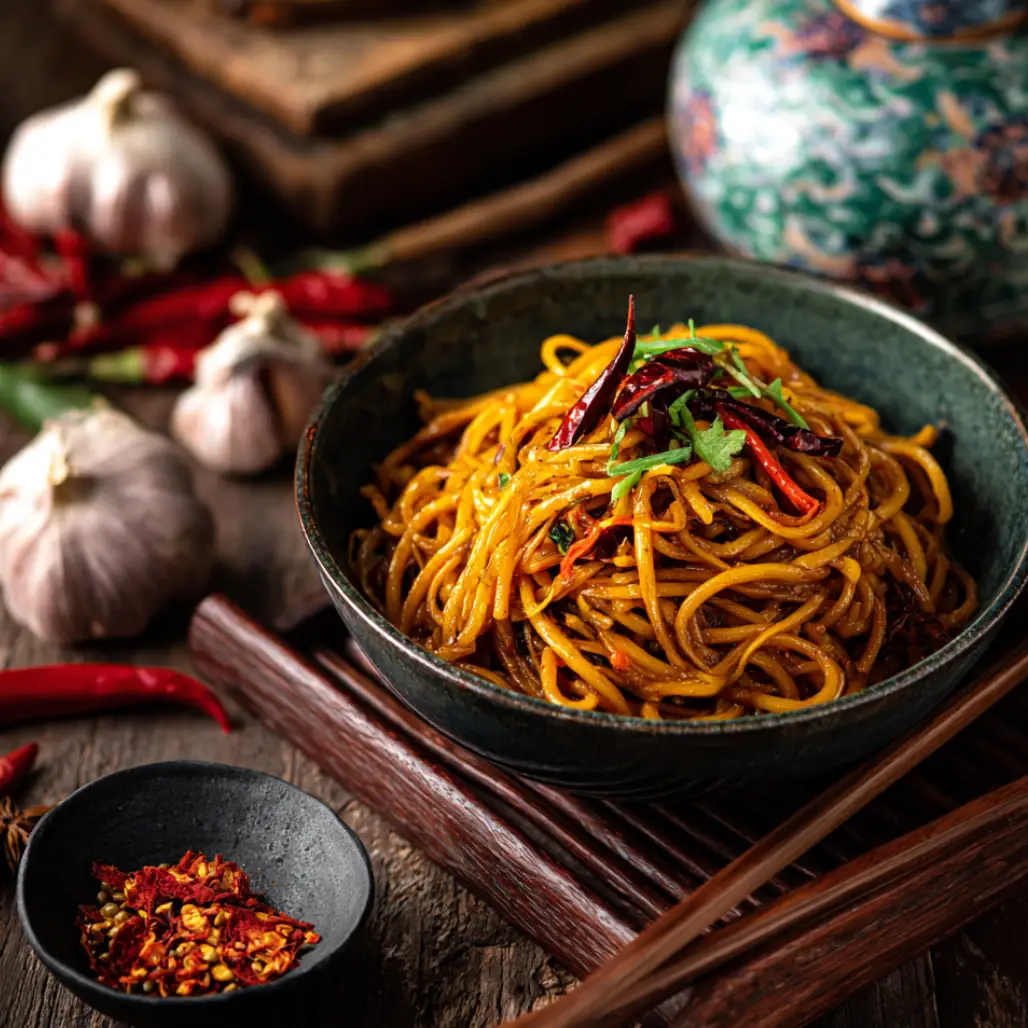| Prep Time: 25 minutes | Cook Time: 35 minutes | Total Time: 60 minutes | Serves: 10 |
Elevate your culinary repertoire with this spectacular blue cheese walnut thyme puff pastry twirl that transforms ordinary entertaining into extraordinary experiences because this sophisticated preparation combines premium ingredients with professional techniques to create stunning visual presentations that taste even better than they look. This remarkable dish demonstrates how traditional French pastry methods can be adapted for modern home kitchens while maintaining the elegance and complexity that makes fine dining so memorable, offering both novice and experienced cooks the opportunity to create restaurant-quality results that impress guests and build confidence in advanced cooking techniques.
Blue Cheese Walnut
The Sophisticated Appeal of European-Inspired Pastry
What distinguishes this creation from typical party foods is its thoughtful balance of bold flavors and delicate textures that develop throughout the eating experience because each component has been carefully selected to complement and enhance the others rather than compete for attention. The sharp, creamy richness of aged blue cheese provides a luxurious foundation that contrasts beautifully with the earthy crunch of toasted walnuts, while fresh thyme adds aromatic complexity that brightens the overall flavor profile and prevents the dish from feeling heavy despite its indulgent nature.
Artisanal Ingredients for Superior Results
2 sheets premium puff pastry, preferably all-butter variety for superior flavor and texture 8 ounces artisanal blue cheese, such as Maytag Blue or Gorgonzola for complex flavor profiles 1 1/4 cups walnut halves, freshly toasted and coarsely chopped for optimal texture 1/3 cup fresh thyme leaves, preferably lemon thyme for citrus notes 1/2 cup aged Gruyère cheese, finely grated for nutty depth 3 tablespoons acacia honey, for floral sweetness that complements blue cheese 2 large egg yolks, for rich golden wash finish 3 tablespoons heavy cream, for luxurious wash mixture 1 1/2 teaspoons coarse sea salt, for finishing and flavor enhancement 3/4 teaspoon freshly ground white pepper, for subtle heat without dark specks 2 tablespoons fresh chives, finely chopped for color and mild onion flavor Fresh thyme sprigs, for elegant final garnish
Mastering the Culinary Craft
Creating this exceptional dish requires understanding both the technical aspects of pastry work and the artistic elements of flavor composition because success depends on executing precise techniques while making thoughtful decisions about ingredient placement and timing. The process demands patience and attention to detail, from properly conditioning the pastry to achieving optimal filling distribution, but the results justify the effort through their impressive appearance and sophisticated taste that demonstrates genuine culinary skill.Blue Cheese Walnut
Comprehensive Step-by-Step Instructions
Establishing the Foundation
Preheat your oven to 425°F with racks positioned in the upper and lower thirds to accommodate multiple baking sheets, then line two large rimmed baking sheets with parchment paper and set aside for later use. Remove the puff pastry sheets from the freezer and allow them to thaw in the refrigerator for 2-3 hours before use, ensuring they remain cold but become pliable enough for rolling without cracking or tearing during manipulation.
Blue Cheese Walnut
Professional Tip: Plan the thawing process carefully because properly conditioned pastry is crucial for achieving the layered, flaky texture that defines excellent puff pastry results.
Key Points: Controlled thawing maintains the butter layers essential for proper rising while ensuring the pastry remains workable during assembly and shaping processes.
Preparing the Flavor Components
Toast the walnut halves in a dry skillet over medium heat for 3-4 minutes until fragrant and lightly golden, then cool completely before chopping coarsely to maintain textural interest because properly toasted nuts contribute significantly more flavor than raw varieties. Crumble the blue cheese into uniform pieces roughly the size of large peas, removing any particularly hard or aged portions that might not melt smoothly during baking.
Blue Cheese Walnut
Professional Tip: Taste the blue cheese before using to assess its intensity and adjust the quantity if necessary, as some varieties are significantly stronger than others.
Key Points: Proper toasting develops complex nutty flavors while uniform cheese pieces ensure even melting and distribution throughout the finished pastry.
Creating the Pastry Canvas
Unfold each thawed pastry sheet on a lightly floured work surface and roll gently to smooth any fold lines, creating rectangles measuring approximately 14×11 inches because uniform thickness ensures even cooking and professional appearance. Create a light wash by whisking together one egg yolk with one tablespoon of cream, then brush this mixture lightly over the entire surface of each pastry sheet to promote golden browning during baking.
Professional Tip: Use a light touch when rolling to maintain the pastry’s delicate layer structure, and avoid excessive flour which can make the finished product tough.
Key Points: Even rolling creates uniform thickness for consistent cooking, while the egg wash provides the golden color that makes the finished dish so visually appealing.
Applying the Honey Base
Blue Cheese Walnut
Drizzle the acacia honey evenly across both pastry sheets using a spoon or squeeze bottle to create thin, uniform coverage that will caramelize during baking while providing subtle sweetness that balances the sharp blue cheese. Use the back of a spoon to spread the honey gently without disturbing the pastry surface, ensuring complete coverage while maintaining the delicate layers beneath.
Professional Tip: Warm the honey slightly if it’s too thick to spread easily, but avoid making it so warm that it soaks into the pastry layers.
Key Points: Even honey distribution prevents overly sweet spots while ensuring consistent caramelization that enhances both flavor and visual appeal throughout the finished dish.
Blue Cheese Walnut
Assembling the Filling Layers
Distribute the crumbled blue cheese evenly across both pastry sheets, leaving a 1.5-inch border on all sides to prevent leakage during rolling and baking because adequate borders are essential for proper sealing. Sprinkle the toasted walnuts over the cheese, followed by the grated Gruyère, fresh thyme leaves, and chopped chives, creating multiple flavor layers that will meld during the cooking process.
Professional Tip: Press the filling ingredients gently into the honey-coated surface to help them adhere during rolling while avoiding excessive pressure that could compress the pastry.
Blue Cheese Walnut
Key Points: Strategic layering ensures optimal flavor distribution while the border prevents filling from escaping during the rolling and twisting processes that create the signature spiral pattern.
Rolling and Cutting Technique
Beginning from the long edge, carefully roll each pastry sheet into a tight log, applying gentle but consistent pressure to compact the filling while maintaining the pastry’s structural integrity because proper rolling creates the dense spiral pattern that characterizes this preparation. Use a very sharp knife to cut each log in half lengthwise with one decisive motion, exposing the beautiful spiral of colorful filling that will become even more dramatic after twisting.
Professional Tip: Clean the knife blade between cuts to prevent dragging filling across the pastry surface, which can blur the clean lines of the exposed spiral pattern.
Key Points: Proper rolling technique creates tight spirals that hold their shape during baking, while clean cuts expose the attractive filling layers that make this dish so visually striking.
Twisting and Shaping Process
Gently twist each halved pastry rope several times to create dramatic spiral shapes that showcase the colorful filling, then carefully coil each twisted rope into a circular shape on the prepared baking sheets. Leave approximately half an inch between each layer of the coil to allow for expansion during baking, and tuck the ends underneath to secure the shape and create neat, professional presentations.
Professional Tip: Work with confidence but gentleness when twisting to avoid breaking the pastry while creating dramatic spirals that will maintain their shape during baking.
Key Points: Proper twisting creates visual drama while strategic spacing allows for pastry expansion without distorting the final shape or causing layers to fuse together.
Final Preparation and Baking
Brush each shaped pastry with the remaining egg wash mixture to ensure beautiful golden coloring, then season lightly with coarse sea salt and white pepper before placing in the preheated oven. Bake for 30-35 minutes, rotating the pans halfway through cooking, until the pastry is deeply golden and fully puffed with the cheese melted and bubbling at the edges.
Professional Tip: Monitor the color development closely during the final minutes of baking, covering with foil if the surface browns too quickly before the interior is fully cooked.
Key Points: Proper egg wash application ensures uniform golden color while adequate baking time guarantees food safety and optimal texture throughout all layers of the pastry.
Expert Techniques for Consistent Excellence
Temperature management throughout the entire process determines the quality of your final results because puff pastry’s success depends on maintaining proper conditions from preparation through baking. Keep the work environment cool, handle the pastry efficiently to prevent butter layer melting, and resist opening the oven door unnecessarily during baking as temperature fluctuations can prevent proper rising and create dense rather than flaky textures that compromise the dish’s appeal.
Creative Adaptations and Seasonal Variations
Transform this sophisticated base by incorporating seasonal ingredients such as dried figs and pecans during autumn months, or fresh herbs like tarragon and chervil for spring variations that celebrate lighter, brighter flavors. Consider different cheese combinations using aged cheddar with apples, or goat cheese with sun-dried tomatoes to create unique flavor profiles that reflect personal preferences while maintaining the elegant presentation that makes this dish so impressive.
Sophisticated Pairing Recommendations
This refined appetizer pairs exceptionally well with crisp white wines such as Chablis or Austrian Riesling, whose minerality and acidity complement the rich cheese while enhancing the herbal notes, and you can discover additional pairing options in our perfect sides collection. Create comprehensive entertaining experiences by incorporating complementary dishes from our flavored dips marinades selection that share similar sophistication levels.
Expand Your Culinary Horizons
Deepen your understanding of advanced pastry techniques by exploring our extensive dessert recipes collection, where similar principles create impressive sweet conclusions to your meals. Our curated selection of sophisticated recipes provides inspiration for building complete menu experiences that demonstrate culinary competence while remaining achievable for dedicated home cooks who appreciate quality ingredients and proper technique.
Advanced Storage and Preservation Methods
Maintain optimal quality by storing completed pastries in airtight containers at room temperature for up to two days, though the texture will gradually soften as moisture from the cheese filling affects the delicate pastry layers. For longer storage, wrap individual portions in plastic wrap and freeze for up to one month, then reheat directly from frozen in a 375°F oven for 12-15 minutes to restore crispness and warm the filling thoroughly.
Understanding the Culinary Science
The success of this dish relies on complex interactions between fats, proteins, and starches that occur during the baking process because the butter layers in puff pastry create steam that lifts and separates the dough layers while the cheese proteins undergo denaturation that enhances flavor development. The honey undergoes caramelization reactions that create hundreds of new flavor compounds, while the volatile oils in fresh herbs are activated by heat to release their full aromatic potential throughout the finished preparation.
Solving Advanced Preparation Challenges
When pastry fails to achieve proper lift during baking, the issue typically stems from compromised butter layers due to overworking or excessive heat during preparation, which can be prevented by maintaining cool working conditions and handling the dough minimally. If filling leaks excessively during baking, ensure adequate borders during assembly and avoid overfilling, as excess moisture can compromise pastry structure and create soggy bottoms instead of the desired crispy texture.
Additional Creative Inspirations
Explore the versatility of similar techniques in our savory sides collection, where comparable methods create impressive accompaniments that showcase your developing pastry skills. Our comprehensive selection of entertaining recipes provides endless inspiration for building memorable dining experiences that honor both traditional techniques and contemporary tastes while remaining accessible to dedicated home cooks.
Conclusion
This blue cheese walnut thyme puff pastry twirl exemplifies how traditional European pastry techniques can be successfully adapted for modern home kitchens because it combines time-honored methods with contemporary flavor preferences to create something both familiar and exciting. The finished dish rewards careful preparation with impressive visual impact and sophisticated flavors that satisfy multiple levels of appreciation, from immediate sensory pleasure to lasting satisfaction that comes from mastering advanced culinary techniques while creating memorable experiences for family and friends who appreciate excellence in cooking.

